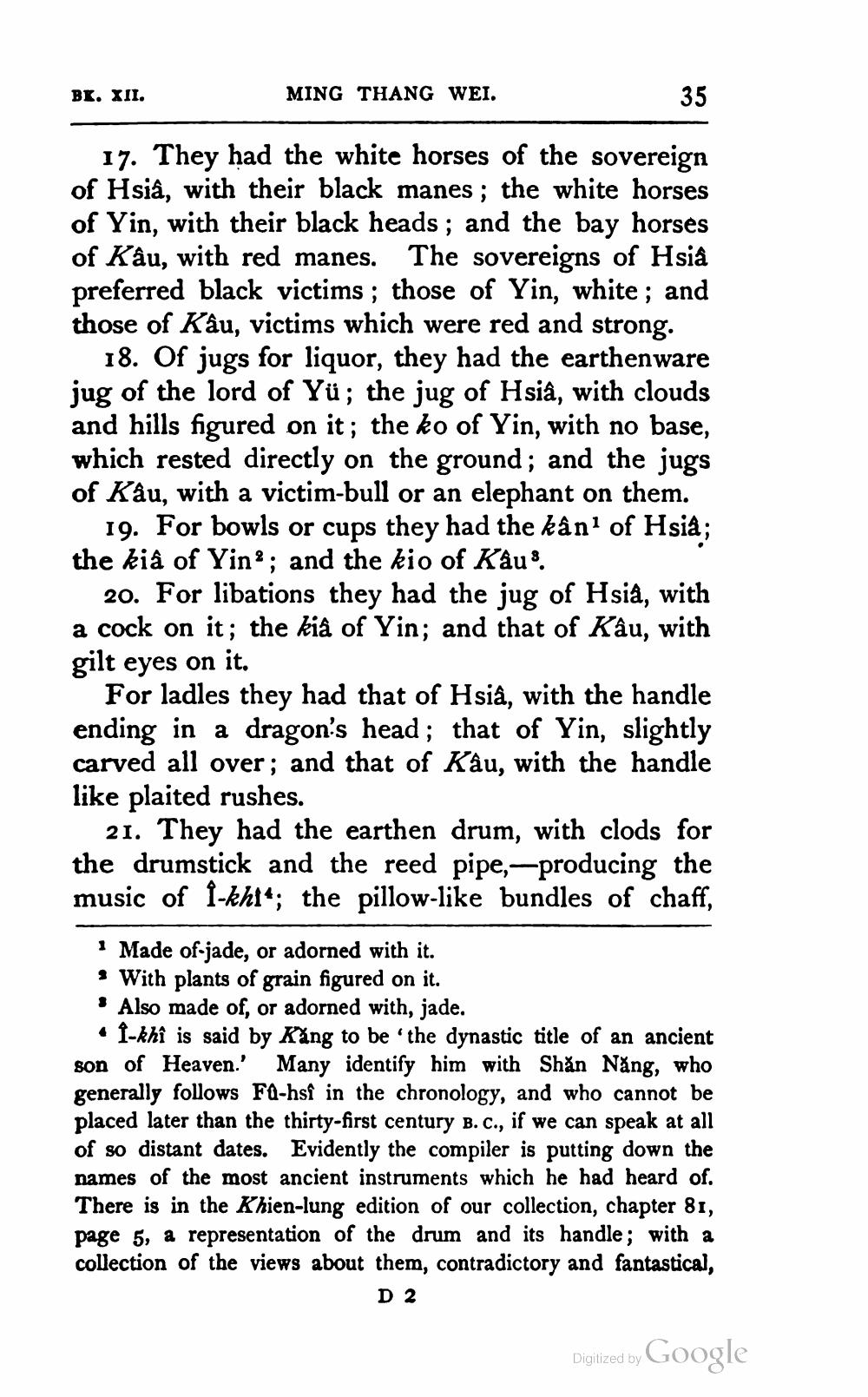________________
BK. XII.
MING THANG WEI.
35
17. They had the white horses of the sovereign of Hsiâ, with their black manes; the white horses of Yin, with their black heads; and the bay horses of Kâu, with red manes. The sovereigns of Hsià preferred black victims; those of Yin, white ; and those of Kâu, victims which were red and strong.
18. Of jugs for liquor, they had the earthenware jug of the lord of Yü; the jug of Hsia, with clouds and hills figured on it; the ko of Yin, with no base, which rested directly on the ground; and the jugs of Kâu, with a victim-bull or an elephant on them.
19. For bowls or cups they had the kân' of Hsia; the kiâ of Yin?; and the kio of Kaus.
20. For libations they had the jug of Hsia, with a cock on it; the kiâ of Yin; and that of Kâu, with gilt eyes on it.
For ladles they had that of Hsiâ, with the handle ending in a dragon's head; that of Yin, slightly carved all over; and that of Kâu, with the handle like plaited rushes.
21. They had the earthen drum, with clods for the drumstick and the reed pipe,-producing the music of I-khl"; the pillow-like bundles of chaff,
1 Made of-jade, or adorned with it.
With plants of grain figured on it. . Also made of, or adorned with, jade.
• I-khî is said by Kång to be the dynastic title of an ancient son of Heaven.' Many identify him with Shăn Năng, who generally follows Fa-hss in the chronology, and who cannot be placed later than the thirty-first century B.C., if we can speak at all of so distant dates. Evidently the compiler is putting down the names of the most ancient instruments which he had heard of. There is in the Khien-lung edition of our collection, chapter 81, page 5, a representation of the drum and its handle; with a collection of the views about them, contradictory and fantastical,
D2
Digitized by Google




